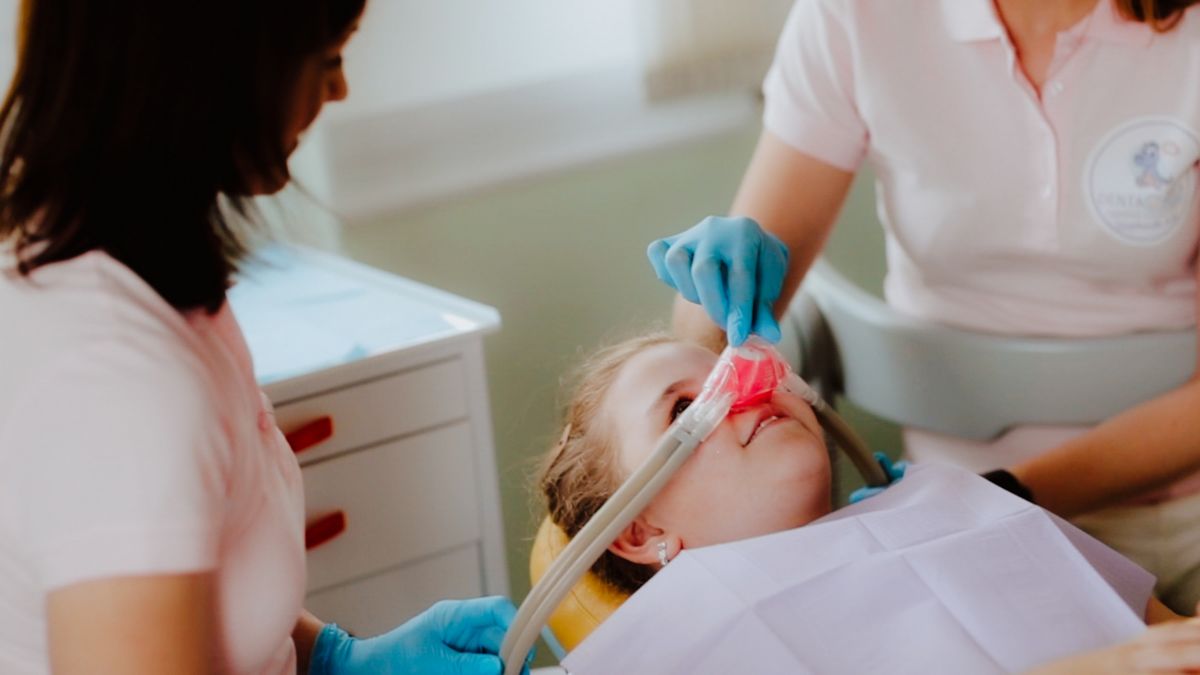Guide To Dental Sedation For Kids

Guide To Dental Sedation For Kids
What do you need to know about dental sedation for kids?
- Purpose of dental sedation
- Types of dental sedation
- Safety of dental sedation
Most kids are nervous about going to the dentist. While it’s normal to feel a little worried when a dental appointment is coming up, children with severe anxiety will need the extra help. This also includes kids with special needs, young children who need extensive dental work, and the like. For these situations, your dentist might suggest sedation dentistry. If you want to know more, keep on reading the guide to dental sedation for kids.
Purpose Of Dental Sedation
 A kid-friendly dental clinic is trained and experienced in helping children feel at ease before and during dental treatment. This can be done by creating a calm and stress-free environment — which starts from the front desk and waiting area. Using kid-friendly language can also help.
A kid-friendly dental clinic is trained and experienced in helping children feel at ease before and during dental treatment. This can be done by creating a calm and stress-free environment — which starts from the front desk and waiting area. Using kid-friendly language can also help.
But when these don’t work, a dentist might consider recommending sedation dentistry as a last measure. Sedation will be beneficial for the following children:
- Children with severe dental anxiety
- Infants and toddlers who require extensive restorative work and multiple visits
- Kids with special needs (emotional, behavioral, or medical)
- Children that are unable to cooperate during the dental treatment
Dental sedation can help relax children, making the whole dental treatment stress-free for the kid and the parent. Aside from that, it can also help eliminate the pain sensation. Lastly, it can also help keep kids safe from injuries that can be caused by struggling and moving around.
Types Of Dental Sedation
There are different types of sedation that can be used for kids:
Nitrous Oxide
Nitrous oxide is better known as the “laughing gas”. It is a safe and mild sedative that can help kids be more relaxed during dental treatment. The gas will be administered through a mask, where the child will be asked to breathe through the nose. The gas will take effect in a few minutes and will help induce calmness and a “happy” feeling.
The mask will be worn until the procedure is done, while the patient is awake throughout the whole process. Once the treatment is done, the kid will be asked to breathe in oxygen to clear out the gas. The effect of the sedation will wear out in a short time.
Oral Sedation
Oral sedation is administered through a pill or liquid form before a dental procedure to make a child more relaxed. There are various kinds of oral sedatives, so the dentist will prescribe one that is fit for the child depending on their medical history.
Oral sedation can also make the patient sleepy, but they will be awake during the treatment. It also takes time to wear off after the treatment, so it’s recommended to have the child rest at home for the rest of the day.
IV Sedation
Intravenous (IV) sedation is used to put the patient to sleep, but not fully. This means that they will be able to respond to the dentist’s questions during the treatment. This type of sedation requires a needle to be inserted into a vein in the arm or hand. One benefit of this method is that it allows a dentist to administer more medicine during a longer procedure when needed.
After the treatment, the child might not remember much of the procedure. They will be required to rest at home for the remainder of the day.
General Anesthesia
When a child is put under general anesthesia, they will be completely asleep and unaware of any pain. In this method, anesthesia professionals will administer the medication and monitor the patient while a dentist performs the dental procedure. Patients under general anesthesia need to be monitored closely after the treatment.
Safety Of Dental Sedation
 Parents might be worried if dental sedation is safe for their kids. Dental sedation is completely safe, but there might be risks for patients with special health conditions. To ensure that it is safe for the patient, the dentist in charge will require a complete medical history. Parents should inform the dentist of the health history of their child and notify of any chronic diseases to get the best advice and recommendation for the child’s case.
Parents might be worried if dental sedation is safe for their kids. Dental sedation is completely safe, but there might be risks for patients with special health conditions. To ensure that it is safe for the patient, the dentist in charge will require a complete medical history. Parents should inform the dentist of the health history of their child and notify of any chronic diseases to get the best advice and recommendation for the child’s case.
Key Takeaway
After reading this guide to dental sedation for kids, you now have a better understanding of your available options when it comes to your child’s dental treatment. Your dentist will recommend the best sedation method that will fit your child’s medical history and dental procedure, so they can get the best treatment they need.
Here at Elevate Dental, we prioritize our patient’s comfort — adults and kids alike! We make sure to create a calm and stress-free environment where you can get quality dental services from experienced dentists. If you’re interested in a consultation, you can visit our branches in Greenhills and BGC.












